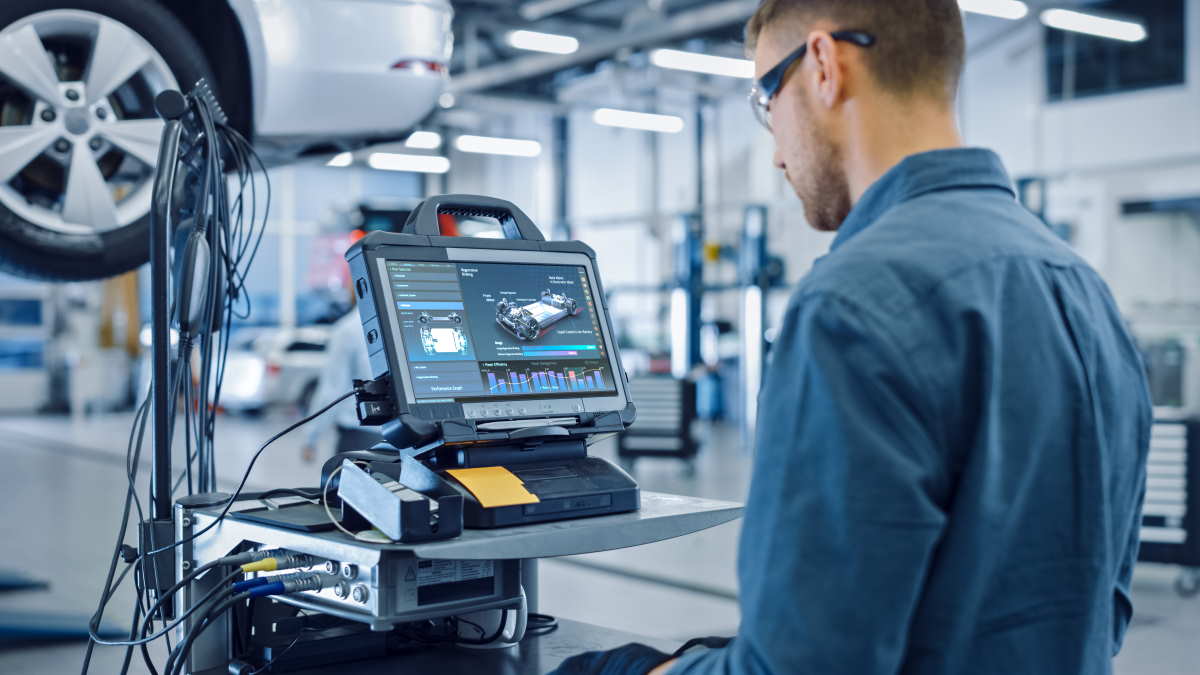In the ever-evolving landscape of automotive technology, embedded software development plays a pivotal role in driving innovation and revolutionizing the driving experience. From advanced driver assistance systems (ADAS) to autonomous vehicles, automotive electronics have become increasingly reliant on sophisticated embedded software to enhance safety, efficiency, and overall performance.
The Evolution of Automotive Electronics
Gone are the days when automobiles were purely mechanical machines. Today’s vehicles are equipped with a myriad of electronic components and systems that rely heavily on software to function optimally. This transformation has been driven by the quest for greater safety, comfort, and efficiency on the roads.
The integration of embedded software in automotive electronics has facilitated the development of cutting-edge features such as:
- Advanced Driver Assistance Systems (ADAS): These systems utilize sensors, cameras, and software algorithms to enhance driver awareness and safety. Features like adaptive cruise control, lane-keeping assist, and automatic emergency braking are all made possible through embedded software.
- Infotainment Systems: Modern vehicles are equipped with sophisticated infotainment systems that provide entertainment, navigation, and connectivity features to drivers and passengers. Embedded software powers these systems, enabling seamless integration with smartphones, voice recognition, and touch-screen interfaces.
- Telematics: Embedded software enables vehicles to communicate with external networks, providing real-time information on vehicle diagnostics, maintenance alerts, and location tracking. This technology not only enhances the driving experience but also enables fleet management and remote vehicle monitoring.
Challenges and Considerations
While embedded software has unlocked a world of possibilities in automotive electronics, its development poses unique challenges and considerations:
- Safety and Reliability: Automotive software must meet stringent safety standards to ensure the reliability of critical systems. Developers must adhere to functional safety standards such as ISO 26262 and implement robust testing methodologies to identify and mitigate potential hazards.
- Real-Time Performance: Many automotive applications require real-time responsiveness to ensure timely and accurate execution of commands. Developers must optimize software algorithms and employ techniques such as task scheduling and prioritization to meet stringent timing requirements.
- Security Concerns: With the increasing connectivity of vehicles, cybersecurity has become a paramount concern. Embedded software developers must implement robust security measures to protect against cyber threats, including encryption, authentication, and intrusion detection.
- Integration Complexity: Modern vehicles consist of numerous electronic control units (ECUs) that must communicate seamlessly to perform various functions. Embedded software developers must navigate the complexities of system integration and ensure interoperability among disparate components.
The Future of Embedded Software in Automotive Electronics
As automotive technology continues to evolve, the role of embedded software will only become more crucial in driving innovation. Some key trends shaping the future of embedded development services in automotive electronics include:
- Autonomous Driving: The development of autonomous vehicles relies heavily on advanced embedded software algorithms for perception, decision-making, and control. As autonomous technology matures, embedded software will play a pivotal role in enabling safe and reliable self-driving capabilities.
- Connected Vehicles: The proliferation of connected vehicle technology will require embedded software to facilitate communication between vehicles, infrastructure, and external networks. This connectivity will enable features such as vehicle-to-vehicle (V2V) communication, traffic management, and remote software updates.
- Electric and Hybrid Vehicles: The shift towards electric and hybrid vehicles presents new challenges and opportunities for embedded software development. Software algorithms are needed to optimize battery management, energy efficiency, and regenerative braking systems to maximize the performance of electric powertrains.
- Personalized User Experience: Embedded software will continue to enhance the personalized driving experience by adapting to individual preferences and behaviours. From customizable infotainment settings to personalized driving profiles, software algorithms will tailor the driving experience to meet the unique needs of each user.
Conclusion
Embedded software development is at the forefront of driving innovation in automotive electronics, enabling a wide range of advanced features and functionalities. As vehicles become increasingly connected, automated, and electrified, the role of embedded software will only grow in importance. By addressing challenges such as safety, performance, and security, embedded software developers will continue to shape the future of transportation and revolutionize the driving experience for generations to come.
